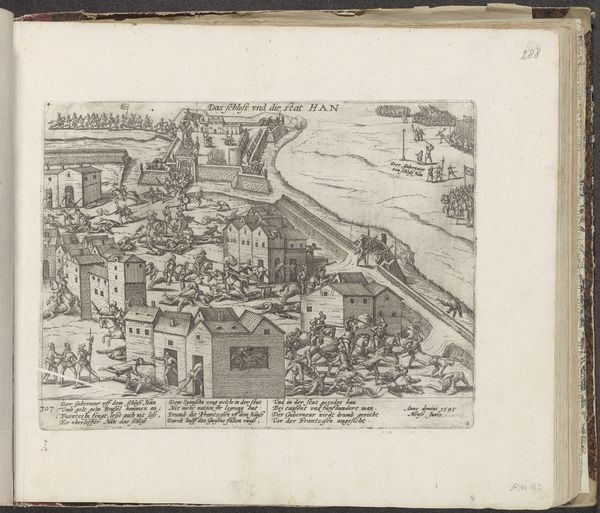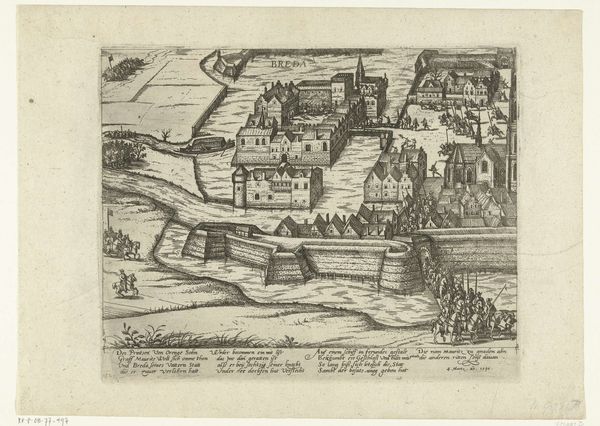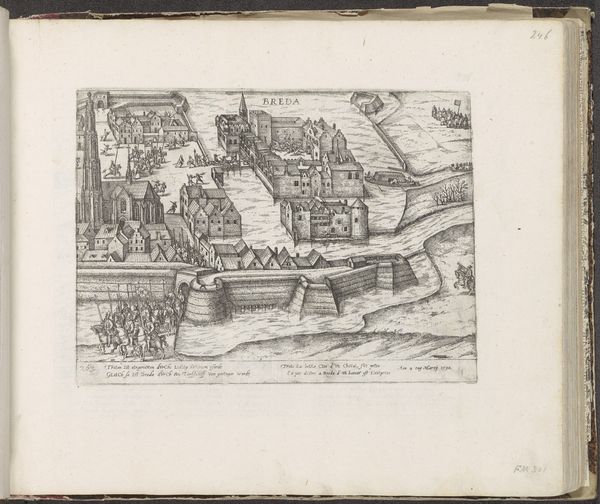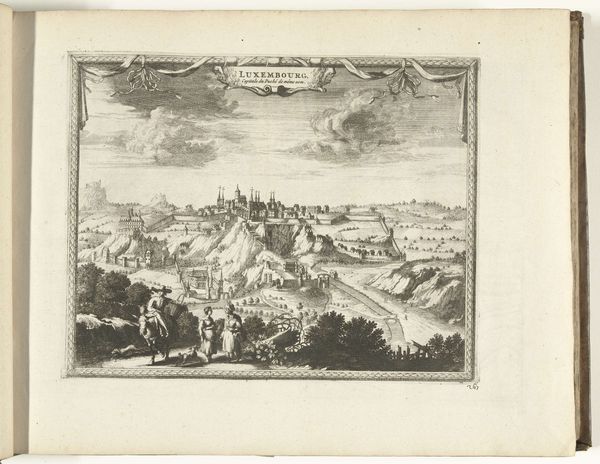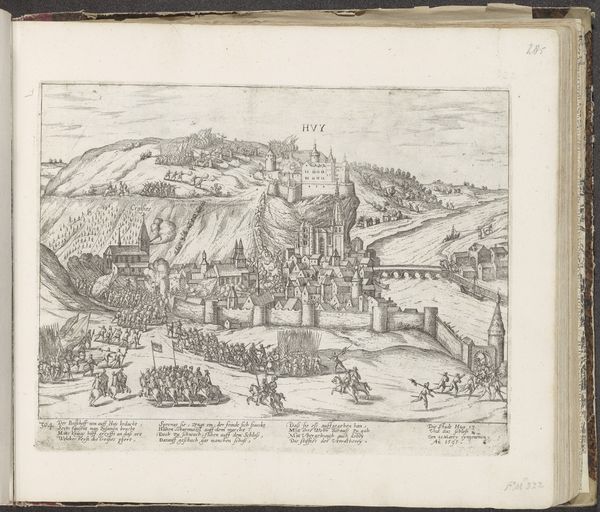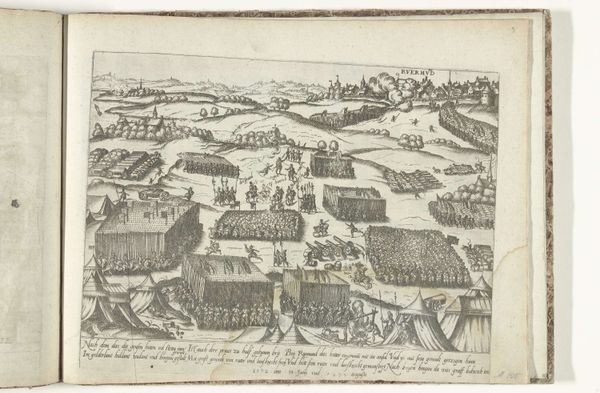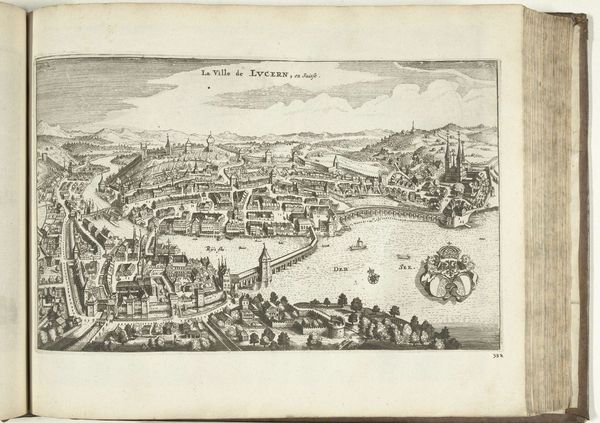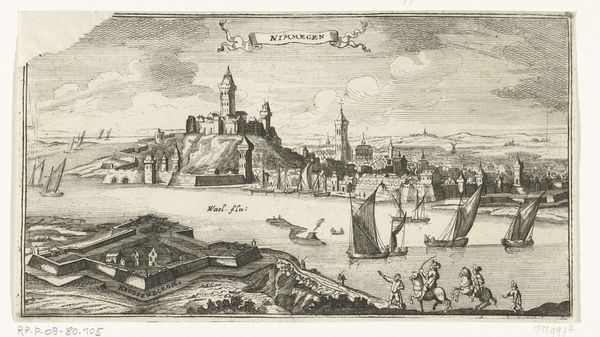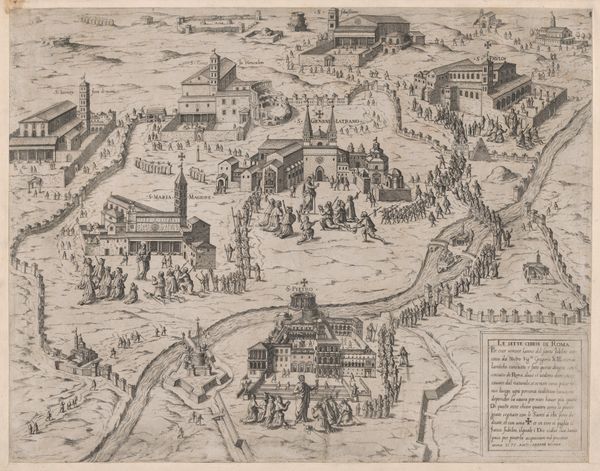
print, engraving
#
medieval
# print
#
cityscape
#
history-painting
#
engraving
Dimensions: height 240 mm, width 310 mm
Copyright: Rijks Museum: Open Domain
Curator: Here we see "Moord te Haarlem door de Spanjaarden, 1573," a print dating from 1573-1575, whose maker is regrettably anonymous. The piece depicts a chilling episode of the Dutch revolt against Spanish rule and belongs to the Rijksmuseum collection. Editor: The eye struggles, doesn’t it? The engraving technique creates an overall sense of starkness and busyness, even chaos. Yet, the composition is actually very carefully constructed with a surprisingly wide field of vision for such a small work. Curator: Engravings like this served as potent propaganda. This particular print offers a bird's-eye view of the siege, turning Haarlem's plight into an emblematic lesson about resistance and martyrdom. The water filled with bodies definitely serves a narrative purpose. Editor: The sheer volume of fine lines creates an incredible sense of detail. Observe the buildings, for instance: the artist really rendered them with almost mathematical precision, even within such a dramatic context. What about the emotional impact from a psychological perspective? Curator: Look closely at the placement of bodies, and especially the use of implied narratives like implied movement: for example, many figures' limbs and expressions seem poised mid-struggle as if trying to claw themselves free of the water itself. It all emphasizes the futility and finality of this horrific event. Its creators no doubt knew it would remain vivid in cultural memory for generations. Editor: The lack of shading contributes, though, to the scene’s overall sense of flat horror—it avoids glorifying what should inspire shame. I suppose the choice of such meticulous linearity enhances its function as a stark historical record meant for wide dissemination. Curator: The intention wasn't simply historical, however. Prints like this weren’t just documenting reality. They sought to shape and manipulate perceptions about the occupiers, solidifying shared anger. The horror served a larger goal, a symbolic call for resistance. Editor: Ultimately, the piece is really about how form echoes content: through calculated line and shape, it shows terror designed for maximal propaganda impact and historical endurance.
Comments
No comments
Be the first to comment and join the conversation on the ultimate creative platform.
